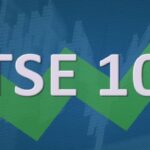Fridays trade saw GBP/USD within the range of 1.5768 – 1.5706 to settle 0.03% higher at 1.5752, closing the week 0.8% lower following a combined 4% jump during the previous two weeks.
At 09:57 GMT today GBP/USD was down 0.32% to trade at 1.5699. The cross held in a daily range of 1.5665 – 1.5739.
Fundamentals
United Kingdom
The number of mortgage approvals in the United Kingdom unexpectedly slid to 64 430 in May from a downward-revised 67 580 in April, the Bank of England reported at 08:30 GMT.
Mortgage approvals measures the number of mortgages approved for purchases of homes by the Bank of England and are considered as a leading indicator, reflecting the health of the country’s housing market. Typically, a higher-than-anticipated increase in their count implies potentially higher demand in the nations housing sector and, respectively, a positive impulse for the overall economy. Therefore, the national currency would also be supported, but to a limited extent, since around two thirds of all mortgages are covered by the BBA Mortgage Approvals data that are released a few days earlier.
Meanwhile, net lending secured on dwellings in the United Kingdom, which includes bridging loans made by banks and other lenders, was at the amount of GBP 2.10 billion in May, following a downward-revised reading of GBP 1.7 billion in April.
Consumer credit in the country came in at the amount of GBP 1.001 billion for the month, down from an upward-corrected GBP 1.176 billion in April. This gauge represents borrowing by the UK personal sector (individuals only) to fund current expenditures on goods and services, which are a driving force behind economic growth. Within a booming economy, however, excessively high levels of consumer lending may be taken as an indication that the economy itself is set to overheat. Within a sluggish or a moderately growing economy, in case lending to individuals expanded more than projected, this would usually have a bullish effect on the pound, and vice versa.
United States
Pending home sales in the United States probably rose 1.2% in May, a report by the National Association of Realtors (NAR) is expected to show at 14:00 GMT, following a better-than-expected 3.4% increase in April. If confirmed, this would be the fifth straight month of growth. Year-on-year, pending home sales growth is projected at 16.5%, up from 14% during the preceding month.
When a sales contract is accepted for a property, it is recorded as a pending home sale. As an indicator, the index provides information on the number of future home sales, which are in the pipeline. It uses data from real estate agents and brokers at the point of a sale of a contract and is currently the most accurate indicator regarding the US housing sector. It samples over 20% of the market. In addition, over 80% of pending house sales are converted to actual home sales within 2 or 3 months, thus giving the index a predictive value about actual home sales.
In case pending home sales increased more than anticipated, this would have a certain bullish effect on the greenback.
A separate report is expected to show that manufacturing activity in Texas probably contracted at a slower pace in June, compared to a month earlier, with the corresponding Dallas Fed Manufacturing Index projected to come in at -16.0 from -20.8 in May, which was the lowest in almost six years.
The Dallas Fed conducts a survey among around 100 business executives regarding changes in the companies’ output, employment, orders, prices, and other variables. Each of the underlying indexes is calculated by subtracting the percentage of respondents reporting a decrease from those reporting an increase. The results are presented in a scale spanning from -100 to 100, with the 0 level being the threshold between an overall positive assessment of the state’s factory activity and an overall negative one. A higher-than-expected reading should be considered as bullish for the US dollar, and vice versa. The data are due out at 14:00 GMT.
Pivot points
According to Binary Tribune’s daily analysis, the pair’s central pivot point stands at 1.5742. In case it penetrates the first resistance level at 1.5778, it will encounter next resistance at 1.5804. If breached, upside movement may attempt to advance to 1.5840.
If the cross drops below its S1 level at 1.5716, it will next see support at 1.5680. If the second key support zone is breached, downward movement may extend to 1.5654.
In weekly terms, the central pivot point is at 1.5776. The three key resistance levels are as follows: R1 – 1.5887, R2 – 1.6021, R3 – 1.6132. The three key support levels are: S1 – 1.5642, S2 – 1.5531, S3 – 1.5397.





